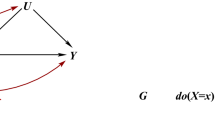Abstract
Published ‘positive’ results of epidemiological studies on possible associations (descriptive or causal) are ever more commonly ‘false positives’ and, thus, false warrants for claiming discovery. More common examination of a multitude of possible associations is widely seen to be the principal cause of this trend. I dispute this explanation and take the principal basis for the trend to be the ever decreasing prior plausibility of the associations that are reported on; and publication bias leading to missing ‘negatives’ in the published results exacerbates the appearance of the problem. The problem is, however, eminently remediable. We epidemiologists, as a collective of researchers, should leave behind the decision-oriented, inference-denying cult of statistical ‘significance’ adduced by Neyman and Pearson, and in its stead we should embrace the Fisherian culture of focusing on the production of statistical evidence, for use in inference by our readers. I recommend a simple, objective measure of evidence, suitable for readers’ Bayesian-type inferences about the existence of an association.
Similar content being viewed by others
References
Boffetta P, McLaughlin JK, La Vecchia C, Tarone RE, Lipworth L, Blot WJ. False-positive results in cancer epidemiology: a plea for epistemological modesty. J Natl Cancer Inst. 2008;100:988–95. doi:10.1093/jnci/djn191.
Begley S. Lies, damned lies and… Newsweek, July 21, 2008.
Orr HA. The genetic adventurer. New York: New York Rev Books; 2008. p. 20.
Greenland S. Multiple comparisons and association selection in general epidemiology. Int J Epidemiol. 2008;17:430–4. doi:10.1093/ije/dyn064. (editorial).
Goodman SN. p values, hypothesis tests, and likelihood: implications for epidemiology of a neglected historical debate. Am J Epidemiol. 1993;137:485–96.
Grobbee DE, Hoes AW. Clinical epidemiology. Principles, methods, and applications for clinical research. Sudbury (MA): Jones and Bartlett Publishers; 2008. p. 399.
Ziliak ST, McCloskey DN. The cult of statistical significance. How the standard error costs us jobs, justice, and lives. Ann Arbor: The University of Michigan Press; 2008. p. 165, 167–8, 172.
Miettinen OS. Theoretical epidemiology. Principles of occurrence research in medicine. New York: Wiley; 1985. p. 114–16, 127–8, 334.
Miettinen OS. Evidence in medicine: invited commentary. CMAJ. 1998;158:215–21. (editorial).
Wakefield J. Reporting and interpretation in genome-wide association studies. Int J Epidemiol. 2008;37:641–53. doi:10.1093/ije/dym257.
Miettinen OS. Survival analysis: up from Kaplan–Meier–Greenwood. Eur J Epidemiol. 2008;23:585–92.
Author information
Authors and Affiliations
Corresponding author
Rights and permissions
About this article
Cite this article
Miettinen, O.S. Up from ‘false positives’ in genetic—and other—epidemiology. Eur J Epidemiol 24, 1–5 (2009). https://doi.org/10.1007/s10654-008-9295-6
Received:
Accepted:
Published:
Issue Date:
DOI: https://doi.org/10.1007/s10654-008-9295-6




